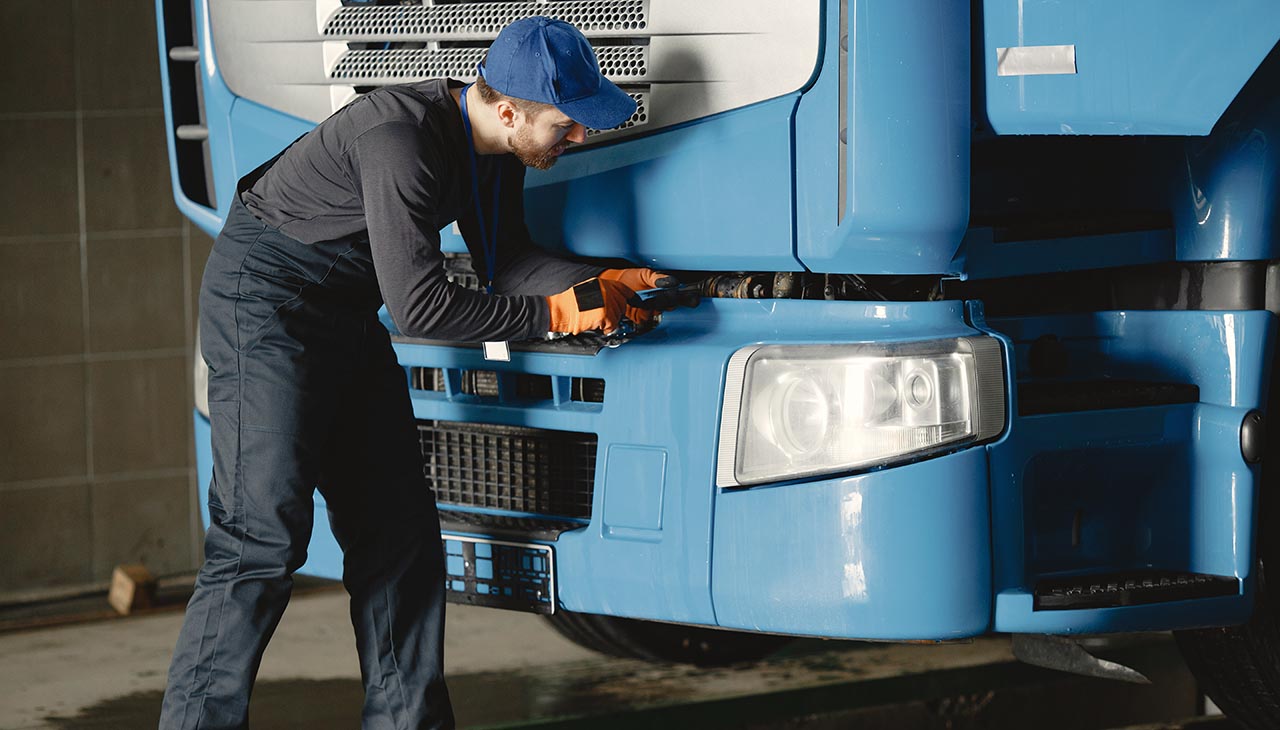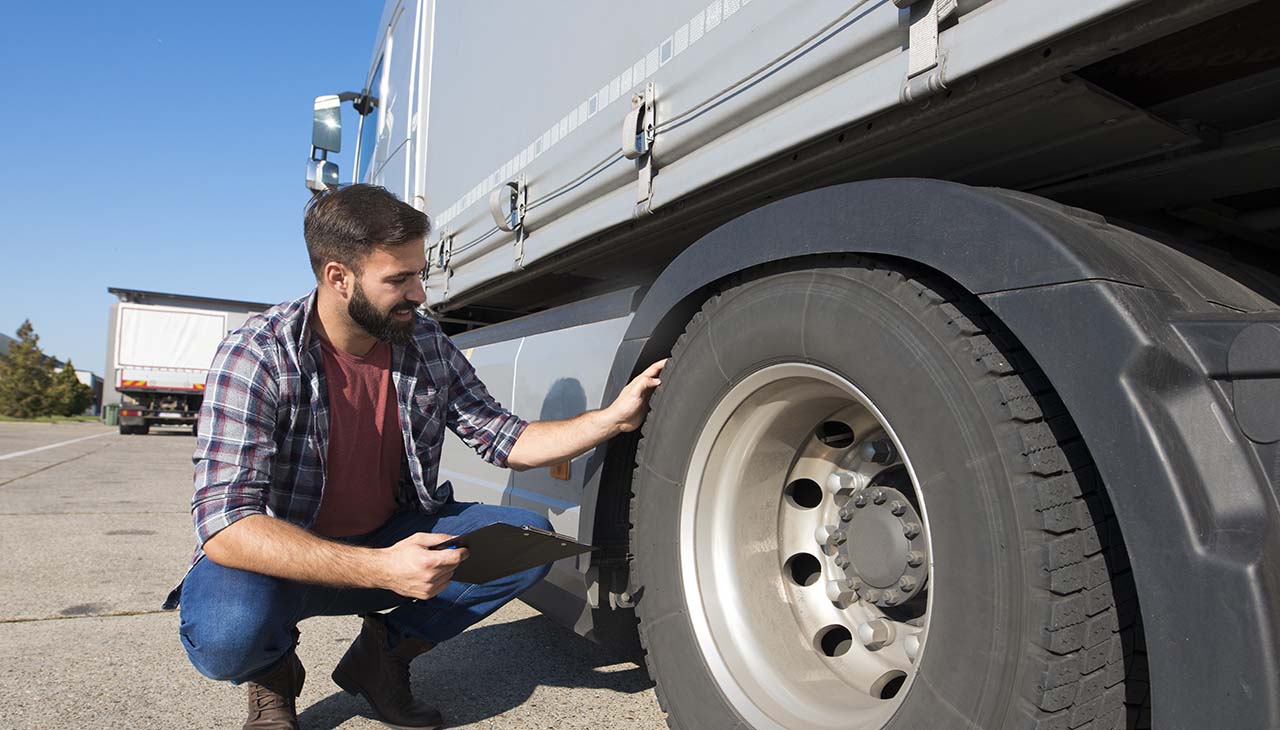Efficient commercial truck operation relies heavily on proper tire maintenance. While these massive vehicles are built for endurance and heavy loads, their tires are particularly susceptible to wear and tear due to the extensive distances traveled and the substantial weights carried. This guide will not only deepen your understanding of the importance of tire upkeep but will also provide you with actionable strategies to ensure that your fleet operates safely, efficiently, and cost-effectively. From routine inspections to understanding tire ratings and choosing the right set for your truck, this comprehensive manual is an indispensable resource for any commercial truck operator or fleet manager.
Regular Inspections
Pre-trip Inspection Checklist
- Tire Pressure: Ensure all tires are inflated to the manufacturer’s recommended levels.
- Tread Depth: Check that the tread depth is above the minimum legal requirement.
- Tire Condition: Look for signs of uneven wear, cracks, bulges, or embedded objects.
- Wheel Fasteners: Verify that lug nuts are secure and not missing.
- Valve Stems: Inspect for damage and ensure valve caps are present and tight.
Post-trip Inspection Checklist
- Tire Damage: Examine tires for new damage or excessive wear that may have occurred during the trip.
- Heat Check: Feel for excessive heat around wheels, which may indicate braking issues or underinflation.
- Debris Removal: Remove any debris caught in the treads or between dual tires.
- Air Pressure: Re-check tire pressure and adjust if necessary after tires have cooled down.
Scheduled Maintenance Intervals
- Weekly Checks: Full tire and wheel component inspection to identify wear trends or issues.
- Monthly Reviews: In-depth examination of tire pressure, tread depth, and overall tire condition.
- Biannual Overhauls: Professional alignment, balancing, and rotation services to ensure even wear and longevity.
Tire Pressure Management
Proper tire pressure management is crucial to the health of your commercial truck tires. It is not just about maximizing the lifespan of the tires; it is also about safety, fuel efficiency, and the stability of your vehicle under load. Under-inflated tires can lead to increased rolling resistance, causing the engine to work harder and burn more fuel. Conversely, over-inflated tires can reduce traction and make handling more difficult. Keeping tires inflated to the correct pressure ensures optimal contact with the road surface, minimized wear, and can prevent accidents.
Tools for Checking Tire Pressure
To maintain accurate tire pressure, you need reliable tools. A high-quality tire pressure gauge should be a staple in every truck’s toolkit. These come in digital or analog versions and should be calibrated regularly to ensure precision. For convenience, many fleet operators also invest in tire pressure monitoring systems (TPMS), which provide real-time pressure readings and alerts for each tire, making it easier to spot issues before they escalate into costly problems.
Recommended Tire Pressure Guidelines
When it comes to tire pressure, always adhere to the manufacturer’s recommended guidelines. These are calculated based on the load capacity and size of the tire relative to the truck it is fitted on. Typically, this information can be found in the truck’s manual, on a sticker inside the door frame, or directly on the tire sidewall. It’s important to adjust the pressure based on the load the truck is carrying—more weight may necessitate a higher pressure within the tire’s rated capacity. Remember, pressure should always be checked and adjusted when the tires are cold, as heat can cause pressure readings to rise temporarily.
Tread Depth Monitoring
Measuring Tread Depth
Tread depth is a critical safety feature of any tire, especially for commercial trucks that navigate across various terrains. To accurately measure tread depth, use a tread depth gauge. Insert the gauge into the tread groove, making sure to check multiple points around the tire. Many tires also feature built-in tread wear indicators, which become flush with the tire’s tread pattern once it’s worn to the minimum allowable level, serving as a visual prompt for replacement.
Significance of Adequate Tread Depth
The significance of maintaining adequate tread depth cannot be overstated. Sufficient tread depth is fundamental for proper traction, effective water dispersion, and avoiding hydroplaning on wet roads. Particularly for commercial trucks, which are often heavily loaded and in motion for prolonged periods, the right tread depth ensures stability and braking efficiency. This is not only a matter of performance but also of legal compliance and road safety.
Tire Rotation for Even Wear
Regular tire rotation is key to achieving uniform wear across all tires, which can extend their useful life and maintain consistent handling characteristics. For commercial trucks, a tire rotation schedule should be adhered to based on manufacturer guidelines or mileage intervals. Tire rotation helps to distribute the load and wear patterns, as the stresses on front and rear axles differ significantly. By routinely rotating tires, fleet managers can also better monitor the overall condition of the tires and detect alignment or suspension issues that may contribute to irregular wear patterns.
Alignment and Balancing
Proper wheel alignment and balancing are essential for the safe and efficient operation of commercial trucks. Misaligned wheels can lead to rapid tire wear, decreased fuel efficiency, and strain on the truck’s suspension system. Similarly, imbalanced wheels cause vibrations at certain speeds that not only lead to discomfort for the driver but also result in uneven tire wear and potential damage to vehicle components.
Effects of Misalignment and Imbalance
Misalignment often results in uneven tire wear, such as feathering or cupping, which can significantly decrease the tire’s lifespan. It can also negatively impact fuel economy as misaligned wheels can cause increased rolling resistance. Furthermore, misalignment may lead to handling issues, making the vehicle less stable and increasing the risk of accidents.
Imbalance in wheels causes vibrations that can be felt in the steering wheel, seat, or floorboards, especially at higher speeds. Over time, this can cause premature wear of tires and strain on wheel bearings and suspension components.
Recommended Alignment and Balancing Schedules
For optimal performance and safety, it’s recommended that commercial trucks undergo a professional wheel alignment and balancing:
- At least once a year or every 50,000 miles, whichever comes first.
- After the installation of new tires to ensure they are properly balanced.
- Following any suspension or steering components replacements, as they can alter the truck’s alignment.
- Whenever irregular tire wear is noticed, suggesting potential alignment or balance problems.
Signs of Alignment or Balance Issues
Drivers and fleet managers should be vigilant for signs of wheel alignment or balance problems, including:
- Uneven tire wear: If one side of the tire tread is wearing down faster than the other.
- Steering issues: If the truck pulls to one side or the steering wheel doesn’t return easily after a turn.
- Vibrations: Felt through the steering wheel or the seat at certain speeds.
- Misaligned steering wheel: If the steering wheel is off-center when driving straight.
Unusual noises: Squealing tires or other noises coming from the tires may indicate an issue with alignment or balancing.





